Are you ready to dive into the world of gardening flowers? Then look no further than the Gardening Flowers 101 Guide, your go-to resource for beginner’s seeking to embark on a vibrant floral journey. As a beginner, mastering the basics of gardening flowers is an essential step towards creating a successful flower garden. Here, we cover all the fundamentals, from understanding your gardening zone and finding the right location, to soil preparation, planting techniques, and ongoing maintenance.
Key Takeaways:
- The Gardening Flowers 101 Guide is the perfect resource for beginners looking to start a flower garden.
- Understanding your gardening zone is essential in determining what plants can survive in your area.
- Choosing the right location for your garden, proper soil preparation, and selecting the right flowers to plant are essential steps towards a successful garden.
- Cultivating essential gardening habits, such as self-education, record-keeping, and developing patience and curiosity are important for creating and maintaining a beautiful flower garden.
Understanding Your Gardening Zone
Before you start planning and planting your flower garden, it’s crucial to understand your gardening zone and gather the necessary tools and supplies. Your gardening zone determines what plants can thrive in your area and when to plant them. This knowledge helps you understand the difference between perennial and annual plants, which is vital for creating a successful flower garden.
You can easily determine your gardening zone by using the USDA gardening zone map or searching online for your specific location. Once you know your zone, you can choose plants that are best suited to your climate and soil conditions.
It’s also important to consider the sun requirements of your plants and choose the right location for them based on the amount of sunlight they need. Some plants need full sun, while others prefer partial shade. Understanding these requirements will help you choose the best location for your flower garden.
Starting a garden can be done in various ways, such as traditional gardening, raised bed gardening, or container gardening. Each method has its own advantages and disadvantages, and you should choose the one that best fits your needs and space.
| Essential Garden Tools and Supplies: | |
|---|---|
| – Gloves | – Seeds or plants |
| – Trowel or handheld cultivator | – Compost |
| – Rake or hoe | – Mulch |
| – Pruning shears or scissors | – Garden hose or watering can |
Good soil preparation is essential for healthy plants and a thriving flower garden. Making your own compost can help improve soil quality by providing essential nutrients and improving soil structure.
Once you have gathered your tools and prepared your soil, it’s time to plant your flowers. Knowing how to plant and care for your plants is essential for a successful flower garden. Keeping good records of your garden’s progress and development can help you identify patterns and make adjustments as needed. Developing curiosity and patience will help you enjoy the process of gardening and appreciate the beauty of your flowers.

By understanding your gardening zone, choosing the right location and plants, and using the correct tools and supplies, you can create a beautiful and thriving flower garden. Remember, successful gardening takes time and effort, but the rewards are well worth it.
Finding the Right Location
The success of your flower garden depends greatly on finding the right location and choosing the most suitable method to start your garden. One important factor to consider is your gardening zone, which can determine the types of plants that will thrive in your local climate. To determine your gardening zone, consult the USDA Plant Hardiness Zone Map, which divides the US into 13 zones based on average annual minimum temperatures.
In addition to your gardening zone, pay close attention to the light conditions of your chosen location. Most flowers require at least six hours of sunlight per day, so make sure your garden spot receives enough direct light. If your chosen location doesn’t receive enough sunlight, consider creating a raised bed or container garden that can be moved to a sunnier spot. These options are also great if you have limited space.
In order to grow healthy flowers, it’s important to make sure your soil is nutrient-rich. Conduct a soil test to determine your soil’s pH level and nutrient content, and amend your soil accordingly. You can also create your own compost to add to your soil, which will improve its fertility and structure.
There are several methods to start a flower garden, including planting directly into the ground, raised beds, and container gardening. Each method has its own benefits, so choose the one that best suits your needs and the space you have available. Raised beds and container gardens are great options if you have limited space or poor soil quality, as they allow you to control the soil quality and drainage more easily.
Before you start your flower garden, take the time to educate yourself about the plants and gardening techniques you’ll be using. Read books, visit online resources, and consult with your local extension office for information specific to your area. Keeping good records of your gardening progress can also help you identify what is working and what isn’t, so be sure to document your experiences.
Finally, developing a curious and patient mindset is key to becoming a successful gardener. Gardening is a journey that requires time and effort, but the rewards are well worth it. Take the time to experiment and try new things, and don’t be afraid to make mistakes. With a little patience and a lot of curiosity, you can create a beautiful and thriving flower garden.

Soil Preparation and Composting
To ensure your flowers thrive, proper soil preparation and composting are crucial steps in the gardening process. Good soil quality is key, and soil test kits can help determine nutrient needs. Testing your soil pH, for example, can help you understand what your plants need to grow. Additionally, knowing your gardening zone is important because it determines what plants can thrive in your climate.
Before planting, it’s important to prepare the soil by removing any weeds, loosening the soil, and adding compost or other organic matter. Composting is a great way to amend soil and can be made by using kitchen scraps, yard waste, and clippings. Making your compost is easy and budget-friendly, and it helps reduce waste. Leaf mold and mulch can also improve soil quality by adding nutrients and retaining moisture.
| Types of Flower Gardens | Soil Preparation Tips |
|---|---|
| Perennial Gardens | Use organic compost for best results. |
| Annual Gardens | For annual flowers, use a slow-release fertilizer in addition to compost. |
| Wildflower Gardens | Spread a layer of compost two inches deep over the planting area. |
Growing flowers from seeds is also an option, and there are several benefits to starting from scratch. You can choose from a wider range of species and avoid using harmful pesticides and chemicals. Seed starting requires a well-draining soil mix, which can be made using vermiculite, perlite, and peat moss. The mix should be moist, but not waterlogged, and seeds should be kept in a warm, bright area until they germinate.
Whether you’re planting seeds or seedlings, be sure to follow the recommended spacing guidelines, as overcrowding can lead to competing for resources and stunted growth. Also, be mindful of the life cycle and zone requirements of each type of plant. Perennials, annuals, and biennials have different blooming cycles, so it’s important to choose plants that will thrive in your gardening zone for optimal success.
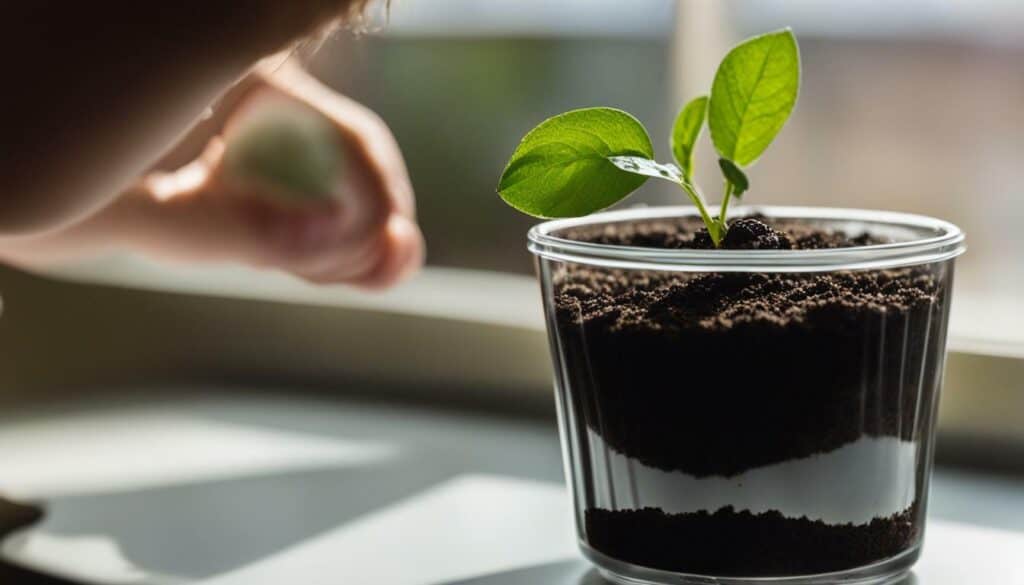
Planting Techniques
Ready to get your hands dirty? Let’s explore different planting techniques and discover the perfect flowers to adorn your garden.
Before digging into planting, it’s essential to know your gardening zone. Each zone has a specific range of temperatures that determine when different types of plants can be grown. Once you know your zone, you can choose plants that thrive in your area.
Having the right tools and supplies is also crucial. Garden shovels, forks, and gloves are just some of the essential tools you’ll need to start your garden.
When finding the right location for your garden, consider the sun’s movement and the amount of daylight each area receives. Different plants require different levels of sunlight, so it’s vital to place them accordingly. You can start a garden using traditional digging, no-dig methods, or raised bed or container gardening.
Good soil quality is also a must for successful planting. Composting and using leaf mold can help improve soil quality, which is essential for strong and healthy plants.
When it comes to planting techniques, it’s important to prepare the soil, dig proper holes for the plants, and encourage root growth. Some of the best flowers for your garden include lilies, zinnias, and marigolds, as they are easy to grow even for beginners.
Direct Seeding
Direct seeding is a common technique for planting. It involves planting seeds directly into the soil, where they sprout and grow. This method is ideal for hardy annuals such as sunflowers, cornflowers, and poppies.
Transplanting
Transplanting involves starting seeds indoors and then moving the seedlings outside once they have grown. This technique is ideal for growing delicate plants such as tomatoes and peppers.
Dividing Plants
Dividing plants involves taking an established plant and dividing it into smaller sections to create new plants. This method is ideal for growing perennials such as hostas and daylilies.
Now that you know some planting techniques and the best flowers to grow, it’s time to get your hands dirty and start planting!
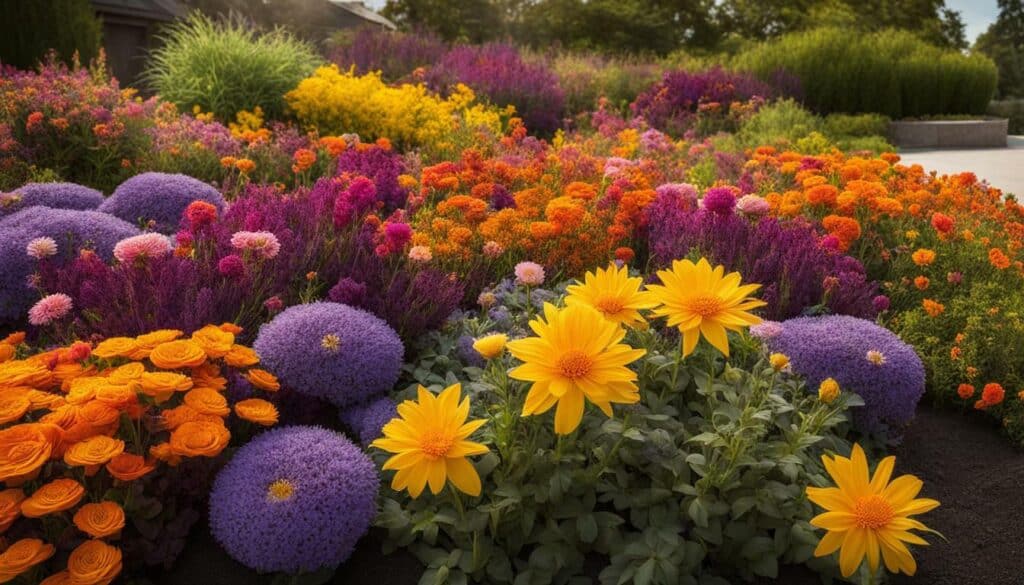
Caring for Your Garden Flowers
Show your garden flowers some love by learning the essential care practices and exploring creative design ideas to beautify your outdoor space. Caring for your garden flowers involves several key steps that can keep them healthy and vibrant throughout the seasons.
Knowing your gardening zone is essential in determining what flowers will thrive in your area and what care they will need. Once you have determined your zone, gather the necessary tools and supplies – garden gloves, pruners, and a wheelbarrow will come in handy as you care for your garden.
Before planting flowers, consider the light conditions and plant tags to find the best location in your garden. There are three methods of starting a garden, including traditional digging, the no-dig method, or raised bed/container gardening. Choose what works best for your space and skill level.
Good soil is the foundation of successful gardening. Consider soil testing and amendment to ensure optimal soil quality. Compost and leaf mold can improve soil fertility and structure, benefitting your plants in the long run.
When planting flowers, prepare the soil and carefully transplant the plants. This process can help your flowers establish strong roots and flourish in their new environment. Try different planting techniques like direct seeding or dividing plants to experiment with what works best for your garden.
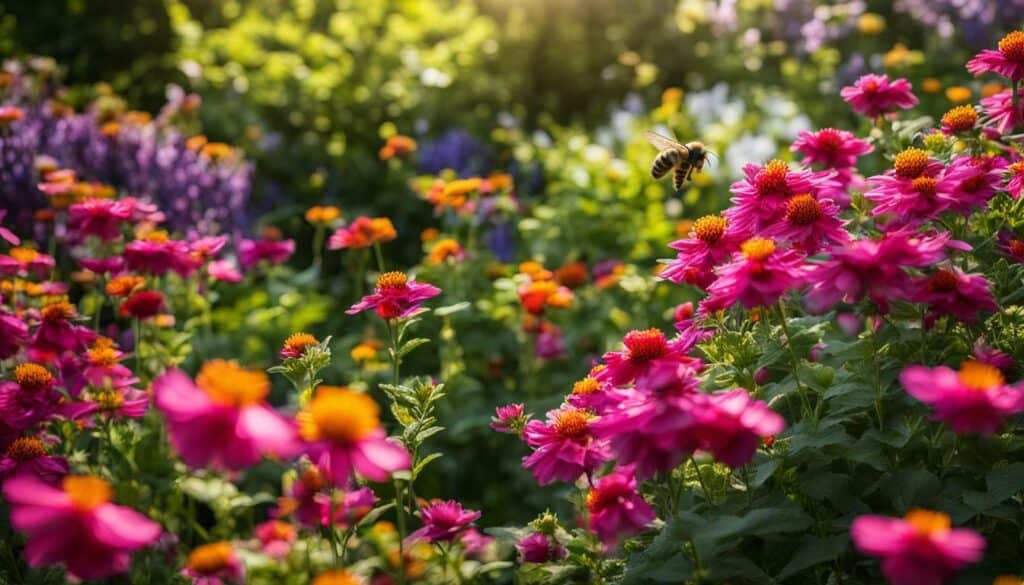
Once your garden is blooming, it’s important to keep up with regular maintenance. Proper watering, fertilizing, and pruning are key components to ensure your flowers thrive. Consider using creative flower garden design ideas to add extra appeal to your outdoor space.
To cultivate a good gardening mindset, educate yourself on best practices, keep good records to track your progress, and foster curiosity, patience, and a sense of humor. These habits can greatly improve your gardening experience and lead to a successful and enjoyable flower garden.
Maintaining a Flower Garden
Maintaining a flourishing flower garden requires consistent effort and the right set of tools. Let’s dive into the key practices and tools you need to keep your garden vibrant.
Gardening tools: To keep your flower garden healthy, you need the right set of tools. Garden shovels, hand trowels, gloves, and pruners are some of the essential tools to have in your collection. However, the tools you need may depend on the type of plants you are growing.
Location: Finding the right location for your garden is crucial for maintaining your plants’ health. Some plants require full sun, while others thrive in partial shade. Observe the area you are considering planting for a day to determine how much sunlight it receives and at what time of day.
Soil: Good-quality soil is crucial for successful gardening. A soil test will help you determine if you need to add nutrients or pH adjusters to your soil. Compost is an excellent soil amendment that helps to retain moisture and adds nutrients to the soil.
Plant maintenance: Regular watering and fertilizing are necessary to keep your plants healthy. Deadheading and pruning are important for promoting new growth and maintaining plant shape. Some plants may require staking to support their growth.
Mindset: Developing a good gardening mindset is crucial for maintaining a successful flower garden. Educating yourself through books and reliable online resources, keeping good records through a garden journal, and developing curiosity, patience, and a sense of humor will all help you enjoy and succeed in your gardening endeavors.
By following these guidelines, maintaining your flower garden will be a rewarding and enjoyable experience. Remember to take care of your tools, plants, and soil to keep your garden flourishing.
Cultivating Essential Gardening Habits
Becoming a skilled gardener goes beyond knowledge; it’s about cultivating habits that foster growth and a deep connection with your garden. Self-education is essential to becoming a successful gardener. There are plenty of resources available to help you learn, such as books, online resources, and local extension offices. Take advantage of these resources to expand your knowledge and discover new techniques to improve your gardening skills.
Keeping good records and maintaining a garden journal can also help you learn and improve your gardening skills. Record what you plant, where you plant it, and how it performs over time. This information is invaluable in making informed decisions about your garden.
Developing curiosity is a vital habit to cultivate as a gardener. Embrace the joy of discovery and be open to trying new things. Patience is also essential. Gardening is a journey, not a destination. Be patient with yourself and your garden as you learn and grow together.
Finally, developing a sense of humor can make gardening more fun and enjoyable. Don’t take yourself or your garden too seriously. Laugh at your mistakes and celebrate your successes. Gardening is a lifelong learning experience, and developing essential habits such as self-education, record-keeping, curiosity, patience, and a sense of humor will help you become a great gardener.
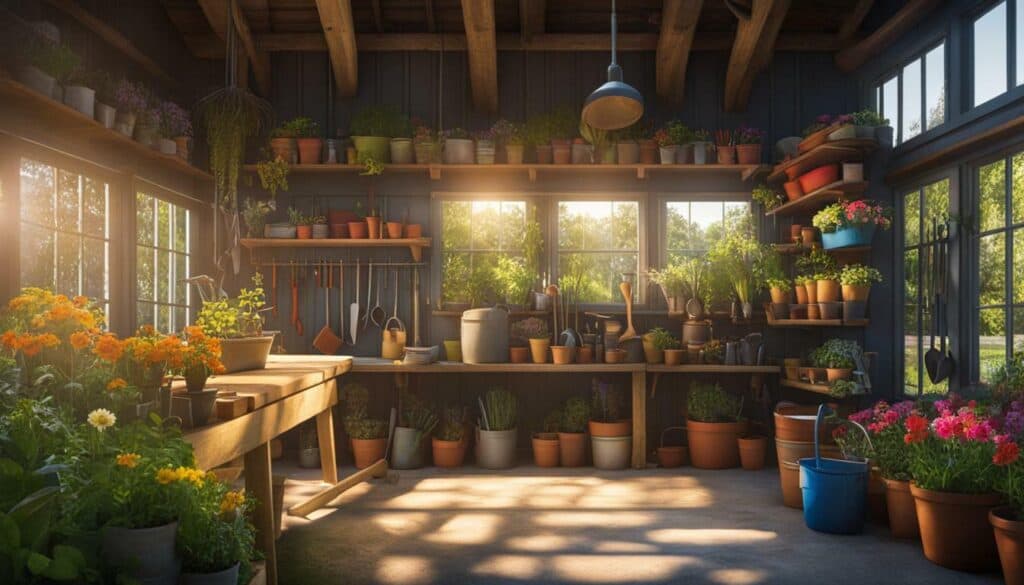
Remember, gardening is not just about the end result, but about the journey. Embrace the process and enjoy the rewards of cultivating a beautiful and thriving garden.
Conclusion
Congratulations! Armed with the knowledge and inspiration from Gardening Flowers 101, you’re now well-equipped to transform your yard into a vibrant flowery sanctuary. Gardening is a rewarding and enjoyable activity that brings joy and therapy to the gardener. It allows you to connect with nature and create beauty in your surroundings.
Your Gardening Zone Matters
Before purchasing plants for your garden, it’s important to determine your gardening zone. This will help you select plants that are most suitable for your climate. The right plants will thrive in your garden, reducing the need for excessive watering and maintenance.
The Right Tools and Supplies
To have a successful gardening experience, you need to have the right tools and supplies. Investing in quality garden tools and supplies will save you time and money in the long run. It’s important to get the basics right, such as gloves, shovels, pruners, and watering cans.
Choosing the Right Location
The location of your garden will determine the amount of sunlight your plants get and their overall growth and health. It’s essential to find the right location with adequate sunlight for your plants to flourish. There are different ways to start a garden, including traditional methods, no-dig methods, and raised bed or container gardening.
Soil Preparation and Composting
Good soil preparation and amending is key to the success of your garden. By making your own compost, you can save money and improve soil quality. Compost enriches the soil with nutrients and microorganisms that promote healthy plant growth.
Planting and Caring for Your Plants
Planting and caring for your plants requires proper techniques and supplies. It’s important to understand the planting techniques, including direct seeding, transplanting, and dividing plants. Proper watering, fertilizing, and pruning are also essential for your plants’ health.
Cultivating Essential Gardening Habits
Great gardeners cultivate essential habits such as educating themselves, keeping records, and developing curiosity, patience, and a sense of humor. Educating yourself about gardening will help you grow as a gardener and troubleshoot any issues that arise. Keeping records of your garden’s progress will enable you to track your successes and failures. Developing curiosity, patience, and a sense of humor will help you enjoy the process of gardening, even when things don’t go as planned.
By following these gardening basics, even beginners can learn how to grow a beautiful garden. Remember to have fun and enjoy the journey!
Can I Use the Basic Herb Garden Layout for My Flower Garden?
A basic herb garden layout may not be suitable for your flower garden. Flower gardens typically require different spacing, plant heights, and sun exposure. While herbs thrive in partial sun, flowers often require full sun. Consider consulting a garden expert or researching specific flower garden layouts to ensure optimal growth for your desired plants.
FAQ
Q: Is this guide suitable for beginners?
A: Yes, the Gardening Flowers 101 Guide is specifically designed for beginners. It covers all the basics of gardening flowers and provides step-by-step instructions to help you get started.
Q: Why is knowing my gardening zone important?
A: Understanding your gardening zone helps you choose the right flowers that will thrive in your specific climate. It ensures that you select plants that are well-suited to your area’s temperature and growing conditions.
Q: What are the essential tools and supplies needed for flower gardening?
A: Some essential tools and supplies for flower gardening include a trowel, garden gloves, pruners, watering can or hose, soil amendments, and potting mix. These will help you perform various tasks in your garden and provide proper care for your flowers.
Q: What are the different methods of starting a garden?
A: There are several methods to start a garden, including raised beds, containers, or traditional in-ground planting. Each method has its advantages, and you can choose the one that suits your space and preferences.
Q: How do I prepare the soil and compost for my flowers?
A: Soil preparation involves loosening the soil, removing weeds, and adding compost or organic matter to improve its quality. Composting involves creating nutrient-rich organic matter by decomposing kitchen scraps, yard waste, and other organic materials.
Q: What are the best planting techniques for flowers?
A: The best planting techniques include direct seeding, transplanting seedlings, and dividing mature plants. Each technique has its benefits and is suitable for different types of flowers.
Q: How do I care for my garden flowers?
A: Caring for garden flowers involves regular watering, fertilizing as needed, and pruning to maintain their health and shape. It’s essential to monitor their growth and address any pest or disease issues promptly.
Q: What are some flower garden design ideas?
A: Flower garden design ideas include creating color schemes, incorporating various heights and textures, and considering the blooming periods of different flowers for continuous blooms throughout the seasons.
Q: What are the essential tools for maintaining a flower garden?
A: Some essential tools for maintaining a flower garden include a garden rake, hand pruners, a garden hose or watering system, a wheelbarrow or garden cart, and a sturdy pair of garden gloves.
Q: How can I cultivate essential gardening habits?
A: You can cultivate essential gardening habits by continuously educating yourself about plants and gardening techniques, keeping good gardening records, and developing curiosity, patience, and a sense of humor throughout your gardening journey.
Source Links
- https://www.prettypurpledoor.com/flower-gardening-for-beginners/
- https://simplysmartgardening.com/gardening-101-beginning-gardener/
- https://stacyling.com/gardening-101-a-guide-for-beginners/
- https://ginghamgardens.com/flower-gardening-101/
- https://www.bobvila.com/articles/hardiness-zones/
- https://www.floridagardener.com/gardening-101-choosing-the-right-plants-for-your-zone/
- https://www.familyhandyman.com/article/how-to-plant-flowers/
- https://www.anneofgreengardens.com/gardening-101/soil-preparation/
- https://www.gardeners.com/how-to/all-about-composting/5061.html
- https://www.saferbrand.com/advice/gardening-101/flower-gardening
- https://www.gardeningchannel.com/what-is-flower-garden-growing-guide/
- https://greatist.com/connect/beginners-guide-to-gardening
- https://www.gardeningchannel.com/a-flower-gardening-introduction/

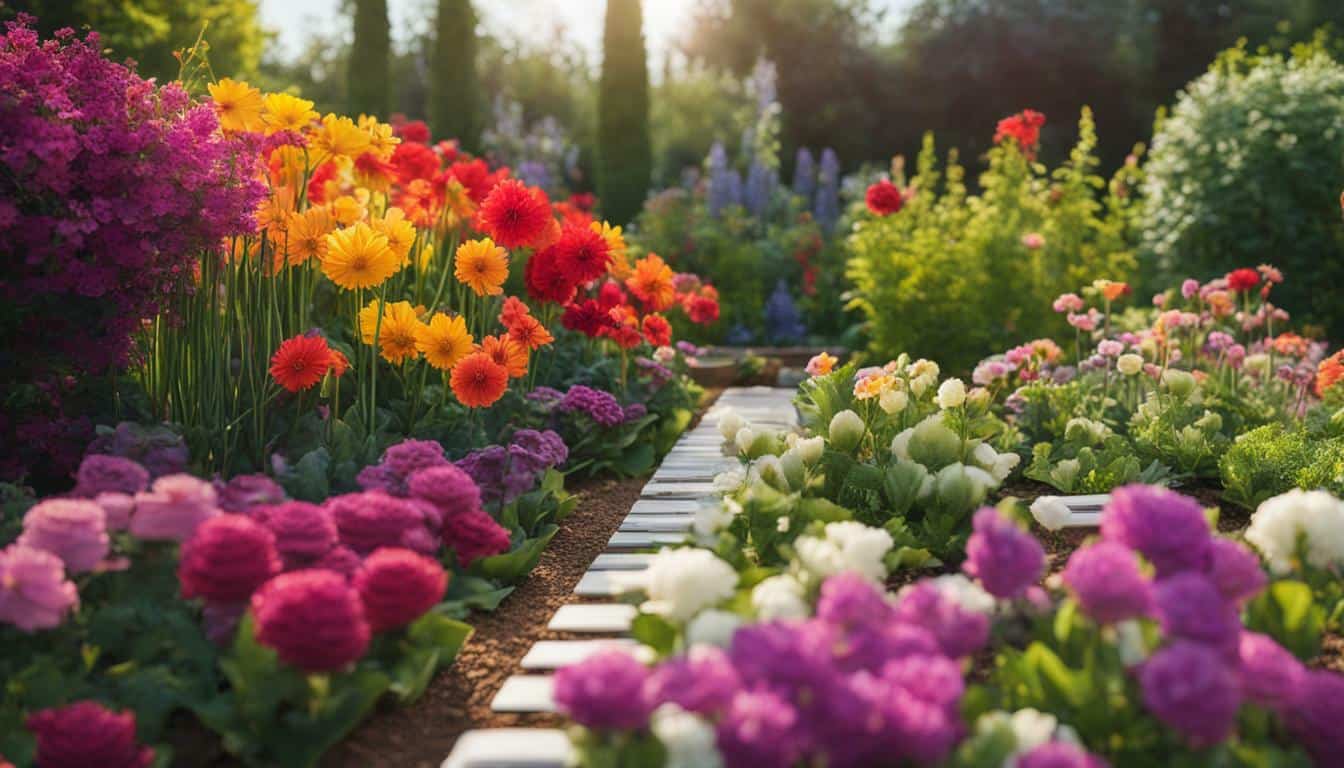



Leave a Reply